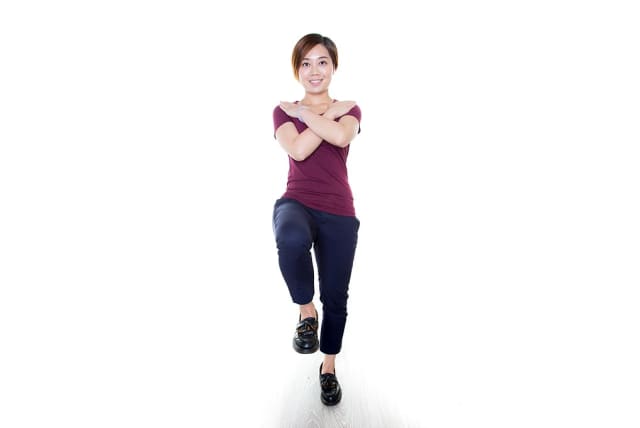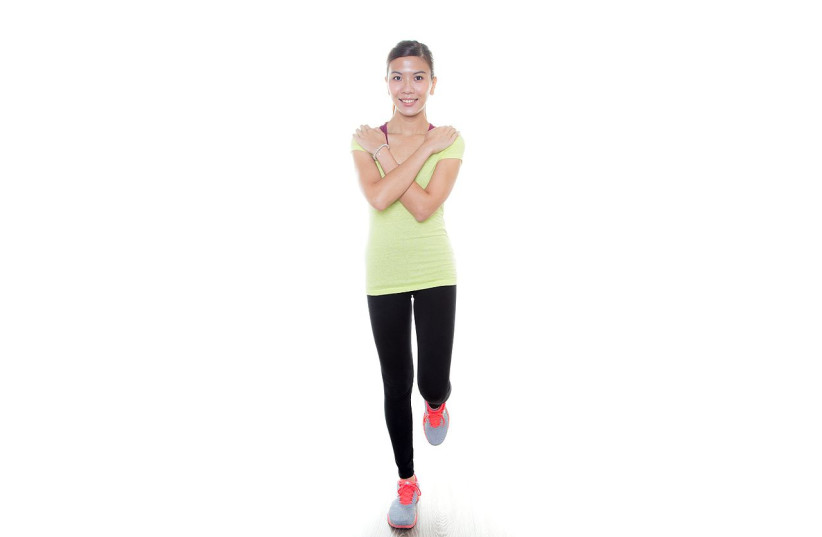Want to check if you're healthy? Do this simple exercise

This exercise can't indicate complete physical health, but it can give an initial idea. So set a timer for 20 seconds and stand on one leg.
Want to check if you're healthy? Try to stand on one leg for 20 seconds without losing your balance. Research shows that the ability to do this is a sign of physical health and that getting better at this can help one's physical fitness and even boost life expectancy.
The ability to stand on one leg is associated with an increased level of physical activity and a lower risk of falling. As a result, it's associated with both life expectancy and quality. In fact, the inability to stand on one leg for 20 seconds or more is associated with, among other things, a higher risk of damage to blood vessels in the brain and reduced cognitive abilities.
You are also less likely to be able to stand on one leg without swaying if you have certain medical conditions like Alzheimer's disease, stroke or Parkinson's disease. Pregnancy and menopause, as well as other conditions, can also change one's sense of balance and impair the ability to stay upright.
A study from Kyoto University in Japan found that being unable to maintain one's balance on one leg could indicate a risk of stroke or dementia. The findings of this study, published in the journal Stroke, found that around 50% of people who suffered heart attacks in the past and 30% of those who had bleeding in the brain that could lead to a stroke all had difficulties staying balanced. Further, subjects who struggled to maintain balance on one leg also showed signs of decreased thinking and memory impairment.
Why is it important to stand on one leg?
When we stand upright, we are often unstable since the human body has a small support base relative to our height and width. Normally, we rely on our central and peripheral nervous systems to process all the incoming information from our senses, such as from the eyes, the inner ears and feedback from joints and muscles. We then activate the needed muscles (legs, ankles, core and sometimes the arms) to make the adjustments needed to stay upright.
Standing on each leg for one minute three times a day can help improve the mineral density in hip bones, recent evidence suggests. A stronger hip means a reduced risk of fractures in the hip at a later age, an injury that can cause a great deal of heartache and suffering.
It isn't really surprising. The more physically active we are, the more likely we are to have better balance, on one leg, in one's mind and in life in general.
Jerusalem Post Store
`; document.getElementById("linkPremium").innerHTML = cont; var divWithLink = document.getElementById("premium-link"); if (divWithLink !== null && divWithLink !== 'undefined') { divWithLink.style.border = "solid 1px #cb0f3e"; divWithLink.style.textAlign = "center"; divWithLink.style.marginBottom = "15px"; divWithLink.style.marginTop = "15px"; divWithLink.style.width = "100%"; divWithLink.style.backgroundColor = "#122952"; divWithLink.style.color = "#ffffff"; divWithLink.style.lineHeight = "1.5"; } } (function (v, i) { });

